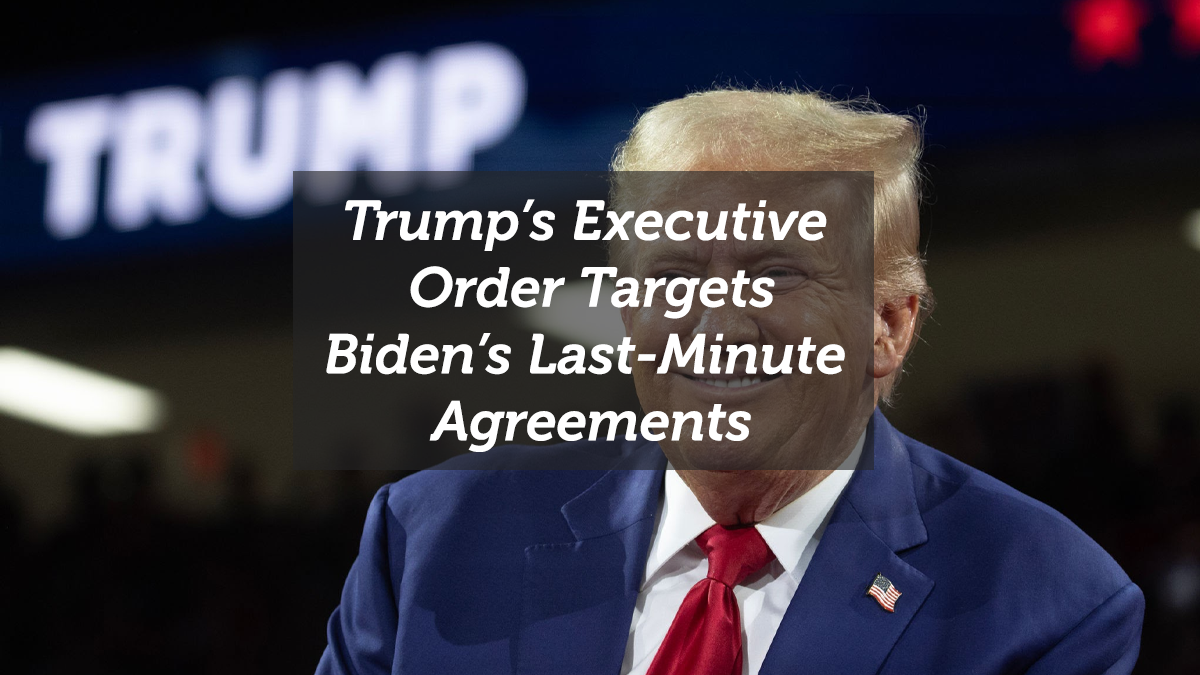
Trump’s Executive Order Targets Biden’s Last-Minute Agreements
President Donald Trump has signed an executive order directing federal agencies to review and potentially reject agreements made by the Biden administration in its final days. Often referred to as “lame-duck” deals, these agreements include collective bargaining agreements (CBAs) with federal employee unions and other policy commitments that could impact the new administration’s ability to govern effectively.
The move, seen as part of Trump’s broader strategy to dismantle Biden’s policies, has sparked legal debates, union opposition, and political controversy.
Here’s a detailed breakdown of the executive order, its potential impact, and the legal and political battles ahead.
Why Trump is Reviewing Biden’s Last-Minute Agreements
1. Targeting Federal Labor Agreements and Policy Commitments
- The executive order directs federal agencies to review CBAs and policy agreements made in the last 30 days of Biden’s presidency.
- If these agreements were pending approval at the time of Trump’s inauguration, agency heads are instructed to reject them outright.
2. Trump’s Argument: Undoing Biden’s “Inefficient and Ineffective” Policies
- Trump’s order claims these agreements were meant to “bind the next administration to ineffective policies.”
- The memo describes them as an attempt to circumvent the will of the electorate and limit the new president’s authority.
3. Legal and Constitutional Questions
- While the executive order does not directly invalidate already approved agreements, it provides a legal framework for challenging them.
- This move is likely to lead to court battles, as unions and other stakeholders argue that these agreements were legally ratified and must be upheld.
Key Agreements Under Review
1. Department of Education: Remote Work vs. Back-to-Office Mandates
- One of the agreements under scrutiny protected remote work arrangements for federal employees in the Department of Education.
- Trump has been pushing for a return to in-office work, and this agreement conflicts with his back-to-office policy.
2. Social Security Administration: Long-Term Telework Agreements
- A deal between the Social Security Administration (SSA) and the American Federation of Government Employees (AFGE) extended telework agreements until 2029.
- Trump’s order challenges this, viewing it as an obstacle to workplace productivity.
Union and Political Reactions
1. Unions Vow Legal Action
- Federal employee unions, including AFGE, have stated they will fight any attempt to nullify these agreements in court.
- Their argument: Once approved, these agreements are legally binding and cannot be undone by executive order alone.
2. Democratic Opposition
- Democratic lawmakers have criticized the move, calling it an aggressive attempt to dismantle labor rights and undermine Biden’s policy legacy.
- Some progressive lawmakers have proposed blocking Trump’s federal appointments until this issue is addressed.
3. Republican Support for the Order
- Many conservatives support Trump’s executive action, arguing that:
✅ Lame-duck deals are often politically motivated and should be reviewed.
✅ Returning federal employees to in-office work is necessary for government efficiency.
✅ Biden’s agreements were an overreach that unfairly restricts Trump’s administration.
Legal and Policy Implications
1. Could Courts Overturn the Executive Order?
- Legal experts believe challenges are inevitable, particularly regarding:
- Whether Trump has the authority to override already approved CBAs.
- The role of Congress in labor agreements—some agreements may require legislative action to modify.
2. Setting a Precedent for Future Transitions
- The executive order introduces a new standard, instructing agencies to:
- Avoid signing last-minute agreements in the final 30 days of a presidency.
- Implement stricter approval processes for labor deals at the end of an administration.
3. Broader Impact on Federal Employees
- If telework agreements and union contracts are nullified, it could lead to:
- Massive workforce disruptions as agencies adjust to new workplace policies.
- Increased tension between federal employees and the Trump administration.
- Potential government shutdown risks, if disputes over labor rights escalate.
Context in Trump’s Broader Policy Agenda
1. Push for Deregulation and Policy Reversal
- This executive order aligns with Trump’s broader strategy of rolling back Biden-era policies, particularly those related to:
- Labor rights and workplace policies.
- Environmental and economic regulations passed in Biden’s final months.
- International agreements and trade policies Biden implemented at the end of his term.
2. Strengthening Executive Power Over Federal Agencies
- By challenging Biden’s agreements, Trump is asserting greater executive control over federal agencies.
- This move reinforces the idea that new administrations should not be bound by last-minute decisions of their predecessors.
3. Return to Office and Federal Workforce Reforms
- Trump has long been critical of federal employees working remotely, arguing that:
- In-office work improves efficiency and government responsiveness.
- Extended remote work arrangements reduce accountability.
This executive order could be the first step in a broader effort to restructure federal workforce policies.
Final Thoughts: What’s Next?
Trump’s executive order to review Biden’s last-minute agreements is one of his most aggressive early moves in his second term. While it does not immediately cancel these agreements, it:
✔ Creates a legal framework for renegotiation or invalidation.
✔ Signals Trump’s intent to undo key Biden-era labor policies.
✔ Sets the stage for legal battles that could shape presidential transition policies in the future.
Key Takeaways:
- Trump targets labor agreements and policy deals made in Biden’s final 30 days.
- The order challenges telework agreements and union CBAs, aligning with Trump’s return-to-office stance.
- Legal challenges are expected, as unions and Democrats argue that these agreements must be upheld.
- This move fits into Trump’s larger agenda of deregulation and reversing Biden’s policies.
As legal battles unfold, this executive action will test the limits of executive power and set a precedent for future presidential transitions.
















